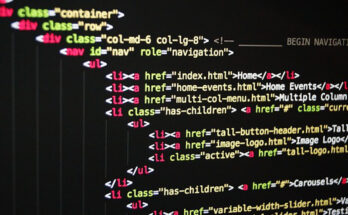
December 8, 2023 Imphal By Banti Phurailatpam:
Contents
- 1 Introduction:
- 2 I. Understanding the Basics of Crowd Simulation:
- 3 II. Creating Realistic Agent Behaviors:
- 4 III. Terrain Adaptation and Navigation:
- 5 IV. Integrating Ragdoll Physics:
- 6 V. Implementing Variability and Diversity:
- 7 VI. Advanced Crowd Rendering Techniques:
- 8 VII. Customizing Crowd Agents with Python:
- 9 VIII. Crowd Simulation for Large-Scale Environments:
- 10 IX. Crowd Simulations for Specific Scenarios:
- 11 X. Advanced Crowd Dynamics and Interactions:
- 12 XI. Dynamic Crowd Interactions with External Forces:
- 13 XII. Crowd Simulation in Virtual Production:
- 14 XIII. Simulating Crowd Emotions and Reactions:
- 15 XIV. Advanced Crowd Analytics:
- 16 XV. Crowd Simulations for Augmented Reality (AR) and Virtual Reality (VR):
- 17 XVI. Collaborative Crowd Simulation Workflows:
- 18 XVII. Real-Time Crowd Simulations with Game Engines:
- 19 XVIII. Exploring Emerging Technologies: AI and Machine Learning in Crowd Simulation:
Introduction:
Crowd simulation is a powerful aspect of 3D animation that brings life and realism to various scenarios, from bustling city streets to epic battle scenes. Houdini, with its robust set of tools, provides an exceptional platform for mastering crowd simulations. In this comprehensive tutorial, we’ll explore advanced crowd simulation techniques in Houdini, guiding you through the process of creating dynamic and realistic crowds for your projects.
I. Understanding the Basics of Crowd Simulation:
Before delving into advanced techniques, it’s crucial to grasp the basics of crowd simulation in Houdini. Understand the Crowd Solver, agents, and agent behaviors. Learn how to set up a basic crowd simulation, control agent movements, and manipulate attributes to influence the overall behavior of the crowd. This foundation is essential for building more complex and nuanced simulations.
II. Creating Realistic Agent Behaviors:
To achieve realism in crowd simulation, it’s essential to imbue agents with diverse and realistic behaviors. Explore the various attributes and parameters within the Crowd Solver to control agent animations, speeds, and reactions. Learn to create custom behaviors such as avoidance, flocking, and goal-oriented movements. Understand the nuances of agent states and transitions to craft lifelike and dynamic crowd animations.
Crowds in real-world scenarios navigate varied terrains with ease. In Houdini, leverage the power of the Crowd Solver to enable agents to adapt to complex terrains seamlessly. Learn techniques for pathfinding, terrain analysis, and adapting agent locomotion based on the underlying geometry. This section will guide you through creating realistic and dynamic crowd movements over uneven surfaces.
IV. Integrating Ragdoll Physics:
To add an extra layer of realism to your crowd simulations, explore the integration of ragdoll physics for agent interactions. Learn how to set up agent rigs for ragdoll simulations, control the transition between animated and ragdoll states, and fine-tune parameters for realistic physics-based reactions. This advanced technique is particularly useful for scenarios involving collisions, falls, or dynamic crowd interactions.
V. Implementing Variability and Diversity:
Avoid the robotic uniformity often associated with crowd simulations by introducing variability and diversity among agents. Learn how to randomize attributes such as appearance, animation, and behaviors to create a more natural-looking crowd. Understand how to use different agent types, variations in clothing, and varying animations to break up visual monotony and add depth to your crowd scenes.
VI. Advanced Crowd Rendering Techniques:
Rendering a large crowd can be computationally demanding. This section explores advanced rendering techniques to optimize the visualization of your crowd simulations. Dive into instancing, LOD (Level of Detail) strategies, and shading approaches to balance visual quality with computational efficiency. Learn to implement crowd variations through shading and texturing to enhance the overall visual appeal of your rendered crowd.
VII. Customizing Crowd Agents with Python:
Houdini’s scripting capabilities open up avenues for customizing crowd agents beyond the default parameters. In this section, explore Python scripting to manipulate crowd agents dynamically. Learn to create custom triggers, behaviors, and attributes through scripting, providing an unprecedented level of control over the individual agents in your simulation.
VIII. Crowd Simulation for Large-Scale Environments:
Scale up your crowd simulations to accommodate expansive environments. Understand the considerations and optimizations required for handling large crowds efficiently. Learn techniques for efficiently distributing agents, managing memory, and balancing computational resources to ensure smooth simulation playback even in extensive scenes.
IX. Crowd Simulations for Specific Scenarios:
Explore specialized scenarios such as protests, parades, or sports events, each requiring unique crowd behaviors. Learn how to tailor your crowd simulation techniques to match the intricacies of specific scenarios. This section will guide you through adapting agent behaviors, animations, and interactions to suit the narrative or context of your project.
X. Advanced Crowd Dynamics and Interactions:
Take your crowd simulations to the next level by exploring advanced dynamics and interactions within the crowd. Understand how to create complex interactions such as crowd waves, dynamic formations, and synchronized movements. Learn to use additional dynamics solvers within Houdini to simulate secondary effects like dust, wind, or other environmental influences.
XI. Dynamic Crowd Interactions with External Forces:
Enhance the realism of your crowd simulations by incorporating external forces that influence agent behavior. Explore how to simulate the impact of environmental factors, such as wind or rain, on the crowd. Understand how to use Houdini’s dynamic solvers to model the interactions between agents and external forces, adding an extra layer of complexity to your crowd scenes.
XII. Crowd Simulation in Virtual Production:
With the rise of virtual production techniques, integrating crowd simulations seamlessly into live-action footage has become essential. Learn how to align your crowd simulations with live footage, ensuring realistic interactions between digital agents and real-world elements. Understand the principles of camera tracking, match moving, and lighting to achieve a cohesive blend between the virtual and physical worlds.
XIII. Simulating Crowd Emotions and Reactions:
Take your crowd simulations beyond mere movements by exploring ways to simulate emotions and reactions. Learn to assign emotional states to agents, influencing their behaviors based on the simulated mood of the crowd. Understand how to use sound cues, visual triggers, or scripted events to evoke specific emotional responses, adding a layer of storytelling depth to your crowd simulations.
XIV. Advanced Crowd Analytics:
Incorporate analytics into your crowd simulations to gain insights into agent behaviors, crowd patterns, and overall dynamics. Explore techniques for visualizing and analyzing data generated during simulations. Understand how to use data-driven insights to refine your crowd simulations, making informed decisions about agent behaviors, density, or specific scenarios based on analytical feedback.
XV. Crowd Simulations for Augmented Reality (AR) and Virtual Reality (VR):
Extend your crowd simulations into the realm of augmented and virtual reality. Learn techniques for optimizing and adapting crowd simulations to immersive AR and VR experiences. Explore considerations such as real-time rendering, interactive user engagement, and the creation of realistic spatial audio to enhance the overall sense of presence in virtual environments.
XVI. Collaborative Crowd Simulation Workflows:
In professional environments, collaborative workflows are crucial. Understand how to collaborate with other artists seamlessly within Houdini to create crowd simulations. Learn to manage assets, share simulation data, and work simultaneously on different aspects of crowd scenes. This collaborative approach ensures efficiency in large-scale projects where multiple artists contribute to the overall crowd simulation.
XVII. Real-Time Crowd Simulations with Game Engines:
Explore the integration of Houdini crowd simulations with popular game engines like Unity or Unreal Engine. Understand the workflow for exporting crowd data, optimizing assets for real-time rendering, and implementing dynamic interactions within a game environment. This section will guide you through the process of bridging the gap between high-fidelity crowd simulations in Houdini and real-time interactive experiences.
XVIII. Exploring Emerging Technologies: AI and Machine Learning in Crowd Simulation:
As technology advances, consider the integration of AI and machine learning techniques into crowd simulations. Explore how AI algorithms can be used to create more adaptive and realistic agent behaviors. Understand the potential of machine learning in predicting crowd movements, reactions, and even generating custom animations based on learned patterns.
Conclusion:
This extended exploration of advanced crowd simulation techniques in Houdini has equipped you with a diverse set of skills to tackle complex scenarios and push the boundaries of creative expression. As you continue to refine your mastery of crowd simulations, consider experimenting with emerging technologies, collaborating with other artists, and exploring applications beyond traditional animation. Houdini’s versatility ensures that you have the tools and knowledge to bring any crowd simulation concept to life in the ever-evolving landscape of 3D animation and visual effects. Stay curious, push the limits, and let your crowd simulations become a testament to your creative prowess.




